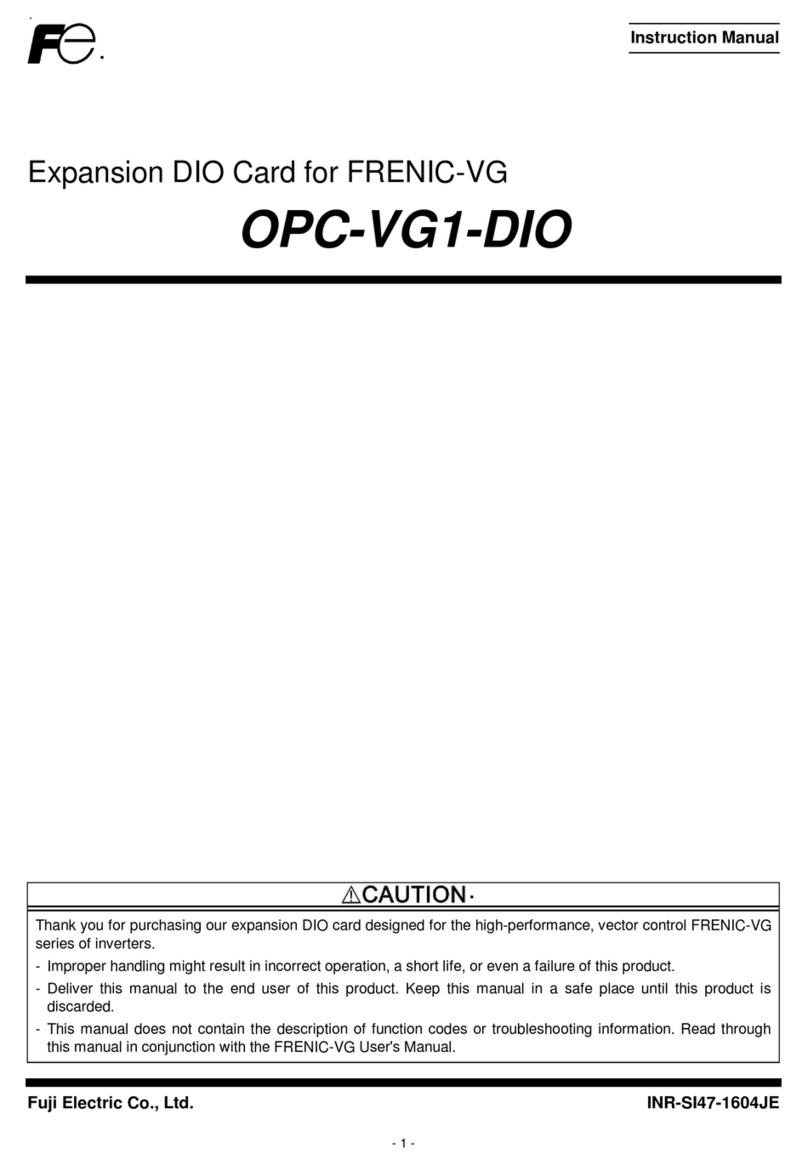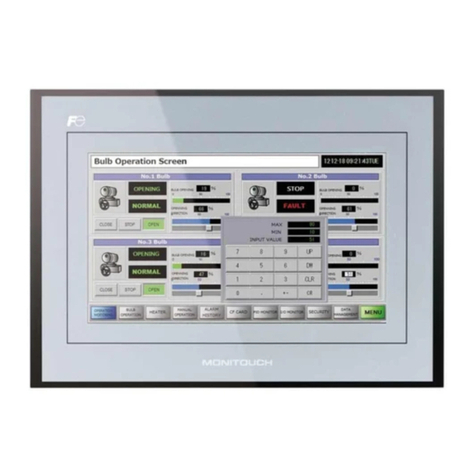
- 3 -
. Specifications
4-1. Specifications for pulse train inputs
Item Specifications
PG output pulse frequency 30 kHz max. (Open collector)
100 kHz max. (Complementary)
PG pulse output circuit Open collector circuit (Maximum cable length: 20 m)
Complementary circuit (Maximum cable length: 100 m)
Input pulse threshold
High level ≥ 8 VDC, Low level ≤ 3 VDC
(For 12 VDC power supply)
High level ≥ 10 VDC, Low level ≤ 3 VDC
(For 15 VDC power supply)
PG pulse input current 8 mA or less
4-2. Specifications of applicable PG and PG interface card
Item Specifications
ncoder pulse resolution 20 to 3000 P/R, A, B and Z phase pulse trains in incremental format
Pulse output circuit Open collector (Maximum cable length: 20 m)
Complementary (Maximum cable length: 100 m)
Input power requirements
High level ≥ 8 VDC, Low level ≤ 3 VDC
(For 12 VDC power supply)
High level ≥ 10 VDC, Low level ≤ 3 VDC
(For 15 VDC power supply)
Pulse output current 8 mA or less
PG power supply* 12 VDC ±10%, 120 mA or less, or
15 VDC ±10%, 120 mA or less
* If a power level required by the PG exceeds 120 mA, use an external power supply.
5. Terminal Functions
Table 2 lists terminal specifications.
Table 2 Terminal Specifications
Terminal
symbol Name Functions
[P1] xternal power input*1
Connects external power supply for the PG.
+12 VDC ±10% or +15 VDC ±10%
(Use the power supply which is 150 mA more than PG current consumption.)
[PO] Power output to the PG*2 Connects the PG power input.
+12 VDC ±10%, 120 mA, or +15 VDC ±10%, 120 mA
[CM] PG power common PG power common terminal
(equipotent with [CM] terminal of the inverter)
[XA] A phase pulse input from reference PG Input terminal for A phase signal fed back from the reference PG
[XB] B phase pulse input from reference PG Input terminal for B phase signal fed back from the reference PG
[XZ] Not used.
[YA] A phase pulse input from slave PG Input terminal for A phase signal fed back from the slave PG
[YB] B phase pulse input from slave PG Input terminal for B phase signal fed back from the slave PG
[YZ] Z phase pulse input from slave PG Input terminal for Z phase signal fed back from the slave PG
*1 Use an external power supply if the PG current consumption exceeds 120 mA. When using an external power supply, turn the slide
switch J1 shown below to the XT position.
*2
Turn the internal switch (SW1) to the proper position according to the PG power requirement. The factory default position is "12V."
SW1
EXT
INT
15V
12V
J1 SW1
To move a switch slider, use a tool with a narrow
tip (e.g., tweezers). Be careful not to touch
electronic parts,
etc. If the slider is in an
ambiguous position, the circuit is unclear whether
it is turned ON or OFF an
remains in an undefined state. Be sure to place
the slider so
that it contacts either side of the
switch.




























